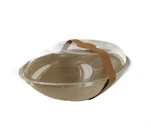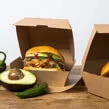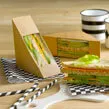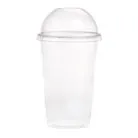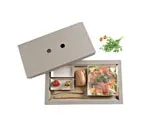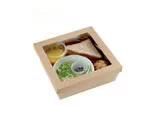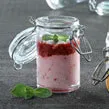Stow It, Don’t Throw It (Away) – Tips for Reducing Food Waste at Home
Posted by Adam Merran on Oct 30th 2014
Fact: There are 7 billion people on this planet (estimated to grow to 9 billion by 2050), and about 925 million of those people are starving. You might be shocked and horrified to know that annually, approximately 1/3 of all the food produced for human consumption is actually wasted (as in, thrown in the garbage). That’s the equivalent of 1.3 billion tons of food, enough to feel 3 billion people (Food & Agriculture Organization of the UN).
 Food Waste is something that occurs toward the back end of the food chain, meaning, at the retail and consumer level. In general, the richer the nation, the higher its per capita rate of wasted food. In the *U.S., nearly 8% of food is lost in production, the food industry loses 4%, supermarkets are responsible for 6%, restaurants contribute 15% of the food in landfills, and households throw away nearly 25% of the food they buy.
Food Waste is something that occurs toward the back end of the food chain, meaning, at the retail and consumer level. In general, the richer the nation, the higher its per capita rate of wasted food. In the *U.S., nearly 8% of food is lost in production, the food industry loses 4%, supermarkets are responsible for 6%, restaurants contribute 15% of the food in landfills, and households throw away nearly 25% of the food they buy.
Let’s break it down. According to FAO, globally 345 million tons of food are wasted at the consumer level– that is, in our homes. That number varies in different regions of the world. So where does the U.S. stand? And further, where do WE as consumers stand? In Latin America consumers waste 55 lbs/person/year; European consumers waste 209 lbs/person/year; and in North America, food wasted by consumers comes to 253 lbs/person/year. We waste more food in North America than any other region in the world.
The good news is that 60% of our food waste at home is avoidable. It basically comes down to 2 things: 1. stop buying more food than we need, and 2. stop cooking too much at mealtimes.
Solving the problem though is not as simple as just asking people to “reduce your food waste.” We all need to first identify WHY we are throwing food away, and then we can start working on our own solutions. We all have personal reasons why we are wasting / throwing so much of our food away. Some things to consider:
- Are we buying too much because we can’t remember what we already have at home? This leads to the next problem which is that we are not able to use what we have before it goes bad or spoils. One solution is to plan our menus and make lists — this is one of the most effective ways we can cut wastage AND food bills.
- Maybe we stayed late at work or made last minute plans to eat out several nights in a row. The fresh food we had planned for those days goes uneaten, and eventually may go bad. Storing foods correctly could prevent spoilage, and keep foods fresh longer.
- Are we overbuying because we are being seduced by supermarket bargains and bulk packaging?
- Another reason for waste is that many people take the “use by” dates literally. This date only communicates peak freshness, not that food is unsafe and needs to be tossed.
- Are we cooking the right amounts for ourselves and our family?
- If we do have leftovers, are we storing them correctly in the fridge or freezer? When we forget to eat or use the leftovers, we end up scraping perfectly edible food into the garbage without thinking twice.
Here is video of Selina Juul’s TEDx talk on food waste. Selina is the Founder of the Stop Wasting Food movement in Denmark.
According to WRAP Household Food and Drink Waste in the UK 2012, the following foods are wasted the most by consumers in their homes:
- Fruits & Vegetables = 27%
- Drinks = 17%
- Bakery = 11%
- Meals = 10%
- Dairy = 10%
- Meat = 7%
There are plenty of other things that we can do to prevent waste like growing our own fruits and vegetables, sharing with neighbors, and being careful not to over order when we eat out. There’s even an app — Love Food Hate Waste — that allows us to easily keep track of food planning, shopping, cooking meals and making the most of leftovers.
Innovative packaging can help consumers buy and use food in portions to match their needs and reduce food waste from leftovers.
Coming soon: Give those dented apples and crooked cucumbers a chance — tips for reducing waste at the retail level.



